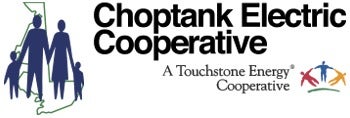Vegetation Management:
Think Before You Plant
By Katie Luckett, Marketing, Communications, Education Manager
Spring is finally here, and with that comes outdoor activities and chores. If planting and digging are on your to-do list this season, we encourage you to follow the safe vegetation management practices outlined below to avoid harm, power line damage, and costly repairs.
If you’re planning to plant new trees around your property, there are important things to consider before selecting the location and type of tree. Determine first where the tree will be planted, then how tall the potential tree will grow, if it will interfere with any overhead power lines, and how far the roots will travel. You may need to adjust the location of the tree if it will interfere with utility lines or choose a different type of tree that won’t grow as tall or wide.

Tall trees, such as maple, oak, spruce, and pine, need to be planted 50 feet apart from one another and will most likely grow taller than overhead utility lines. Small trees, such as redbud, dogwood, and crabapple, can be planted 20 feet apart from one another and should not grow taller than overhead utility lines at 25 feet high.
To be sure the area selected to plant the tree is safe, another vegetation management practice is to call the national call-before-you-dig phone number by dialing 811. This will aid in selecting where to plant your trees by requesting the marking of approximate locations of buried utilities with paint or flags, so you don’t unintentionally dig into an underground utility line. Once all utilities have marked their buried lines, you can dig carefully around any utility marks and relocate projects that are close to buried utilities, considering that tree roots travel over time as well.
An improperly placed tree causes nearly 15% of all outages on our system. Proper vegetation management provides reliable electricity to the Cooperative’s members. Additional activities such as tree trimming, tree removal, mowing, and herbicide application to clear non-compatible vegetation from within and around the varying utility resources maintained by Choptank Electric keeps all lines, equipment and staff safe.
Following sound vegetation management techniques that meet all local, state and federal regulations while enriching the natural resources of the Eastern Shore of Maryland, vegetation management represents the largest portion of Choptank Electric’s Right-of-Way budget. This provides maintenance activities for all nine counties in a three-year maintenance cycle.
Invasive species are an immediate threat to our electrical system. Once a tree is dead it becomes structurally unsound, increasing the likelihood that the tree could uproot, break off, and/or shed large branches. This could seriously damage our distribution system and result in a loss of power to members. We recommend treating your trees with insecticides that can prevent Emerald Ash Borer infestation and reporting invasive plant infestations to your local land management agency.
Choptank Electric also supports pollinator health and protection on the Eastern Shore. Homeowners are encouraged to plant a pollinator garden, choose plants that flower throughout the year, and plants that are native to your local area to attract pollinators.
Visit www.choptankelectric.coop/vegetation-management to learn more about proper tree planting and vegetation management, and www.choptankelectric.coop/you-dig-miss-utility to learn more about marking underground utility lines. Our Member Service line is also available to call Monday-Friday from 8 a.m. - 4 p.m. with additional questions at 877-892-0001.
